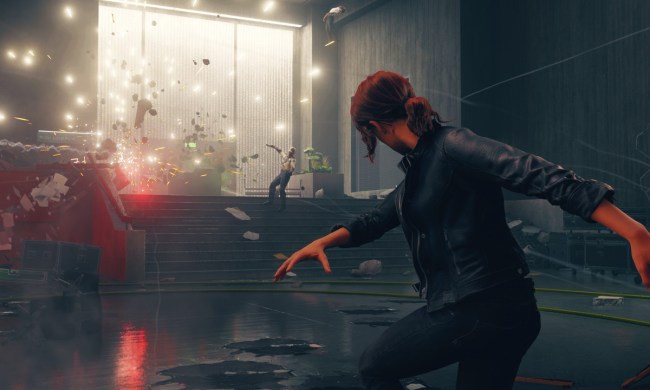Frame pacing requires two or more of the same installed graphics chips, such as two Radeon RX 480 cards. Games can be considered as a movie consisting of one image displayed after another to create the illusion of motion. Each frame is a still image, but (to get back to basics) when you cram 30 to 60 successive images into each second, your brain is fooled into seeing movement.
Graphics chips render game images the same way, and typically only one chip does the job. But if the stress is too great, the number of images per second drops, distorting the illusion and creating screen lag. In turn, the experience isn’t as immersive and the player input (via mouse, keyboard, or gamepad) doesn’t correlate correctly on the screen.
But with multiple graphics cards, the processing of the frames can now alternate between each unit. This provides incredibly smooth gameplay because one graphics processor isn’t doing all the heavy work.
However, if the two get out of sync, then the illusion of movement is broken again, creating visual stutters and lag on the screen. This may happen because one frame is taking longer to produce, and the second GPU renders an image instead of waiting its turn. Overall, a timing problem between the two graphics chips can occur, and that’s where frame pacing comes in.
Frame pacing is a software algorithm that corrects the timing problem so that each frame is rendered and sent to the display accordingly. As Scott Wasson describes it, frame pacing works as a traffic regulator for image frames so they flow in a coordinated fashion. Thanks to this algorithm, animation is smoother and more fluid, preserving the illusion of movement on-screen.
In an example using 3DMark Time Spy, turning frame pacing off revealed that half of the frame interval times were really low and the other half were really high. But with frame pacing on, the frame times were evenly paced and appear to increase over time. In this test, frame pacing dropped the time it takes to generate 99 percent of the frames rendered per second from 43.6 milliseconds to 23.4 milliseconds.
In the blog, Marinkovic said that with AMD’s Alternate Frame Rendering enabled, Rise of the Tomb Raider running on multiple Radeon RX 480 cards will see up to 35 percent lower 99th-percentile frame times at 2,560 x 1,440 resolution. The same setup sees a 37-percent reduction in 99th-percentile frame times in Total War: Warhammer.
Frame pacing support in DirectX 12 is currently enabled in a number of PC games. All AMD Graphics Core Next (GCN)-enabled GPUs can take advantage of this feature along with AMD A8 APUs or higher with GCN graphics.



